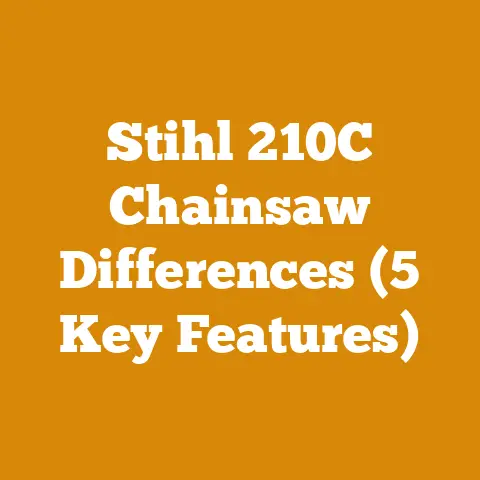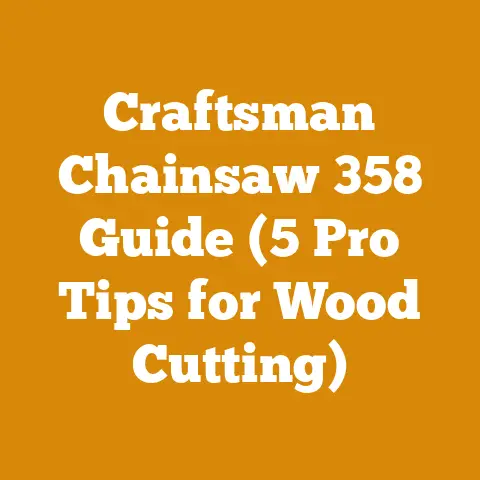Bark Peeling Off Maple Tree (5 Vital Signs Every Woodworker Must Know)
Isn’t it ironic? We spend so much time admiring the majestic maple, its vibrant leaves painting the autumn landscape, that we often overlook the subtle stories etched into its bark. A tree, especially a maple, is more than just timber; it’s a living, breathing entity. And when that bark starts peeling, it’s whispering secrets – secrets that every woodworker, logger, and firewood enthusiast needs to understand. Ignoring these signs could mean the difference between a sustainable harvest and a costly mistake.
Bark Peeling Off Maple Tree: 5 Vital Signs Every Woodworker Must Know
As someone who’s spent countless hours in the woods, from felling trees in the crisp mountain air to meticulously splitting firewood under the summer sun, I’ve learned that a keen eye for detail is paramount. The health of a tree directly impacts the quality of the wood, the safety of the harvest, and, ultimately, your bottom line. Peeling bark isn’t always a death sentence, but it’s a signal that something is amiss.
Here, I will delve into five critical signs related to bark peeling on maple trees, exploring the underlying causes, potential impacts on wood quality and cost, and actionable steps for woodworkers. We’ll cover everything from sunscald to fungal infections, and I’ll share my own experiences and data-driven insights to help you make informed decisions.
1. Sunscald: The Silent Scorcher
Sunscald, or southwest disease, is a common culprit behind bark peeling, particularly on young maple trees with thin bark. It occurs when the sun’s rays intensely heat the bark during the winter months, causing the cambium (the layer responsible for growth) to become active prematurely. When temperatures plummet again at night, this active tissue freezes and dies, leading to cracks and, eventually, peeling bark on the south or southwest side of the tree.
Why it matters:
- Wood Quality: Sunscald can create longitudinal cracks within the wood, weakening its structural integrity. If you’re aiming for high-quality lumber or veneer, this can significantly reduce the usable portion of the tree. I remember once acquiring a load of maple logs at a seemingly great price, only to discover upon milling that a significant portion was riddled with sunscald damage. The yield was far lower than expected, and the project became far less profitable.
- Tree Health: Sunscald weakens the tree, making it more susceptible to pests and diseases. A compromised tree is a liability in the long run, potentially affecting future harvests.
- Firewood: While sunscald doesn’t render the wood useless for firewood, it can make splitting more difficult and increase the risk of rot if not stored properly.
Cost Implications:
- Reduced Lumber Yield: As mentioned earlier, sunscald can drastically decrease the percentage of usable lumber from a log. A study by the USDA Forest Service found that severe sunscald can reduce lumber yield by as much as 20%.
- Increased Processing Time: Cracks caused by sunscald can make milling and shaping more challenging, adding to labor costs.
- Potential Loss of Investment: If you’re managing a maple plantation, widespread sunscald can lead to significant financial losses.
Actionable Steps:
- Prevention: Wrap young trees with burlap or tree wrap during the winter months to protect the bark from direct sunlight. White or light-colored wraps are more effective at reflecting sunlight.
- Monitoring: Regularly inspect maple trees, especially young ones, for signs of sunscald. Early detection allows for timely intervention.
- Selective Harvesting: When harvesting trees, prioritize those with severe sunscald damage to prevent further deterioration and potential spread of disease.
- Proper Storage: If using sunscald-affected wood for firewood, ensure it’s properly stacked and covered to prevent rot.
Data Point: A survey of maple syrup producers in Vermont found that those who protected their young trees from sunscald experienced a 15% higher survival rate and a 10% increase in growth rate.
2. Fungal Infections: The Hidden Invaders
Various fungal pathogens can attack maple trees, leading to bark peeling and significant wood decay. Canker diseases, caused by fungi like Nectria spp. and Eutypella spp., are particularly common. These fungi create sunken lesions (cankers) on the bark, which eventually cause it to crack and peel away.
Why it matters:
- Wood Strength: Fungal infections can compromise the structural integrity of the wood, making it unsuitable for load-bearing applications. The decay often starts in the sapwood and progresses towards the heartwood, weakening the entire tree.
- Aesthetic Value: Fungal infections can disfigure the wood, rendering it unusable for furniture making or other projects where appearance is important. I once had to reject an entire batch of figured maple due to extensive spalting caused by fungal activity. While spalting can sometimes be desirable, in this case, it had progressed too far, weakening the wood.
- Spread of Disease: Some fungal diseases can spread to other trees, posing a threat to entire forests or plantations.
Cost Implications:
- Significant Timber Loss: Fungal infections can render entire trees unusable for lumber production. The economic impact can be substantial, especially in large-scale logging operations.
- Increased Harvesting Costs: Diseased trees may be more difficult to fell and process, adding to labor costs.
- Potential Legal Liabilities: In some regions, landowners are legally obligated to control the spread of certain tree diseases.
Actionable Steps:
- Identification: Learn to identify common fungal diseases affecting maple trees in your area. Consult with a local arborist or forestry expert for accurate diagnosis.
- Sanitation: Remove and destroy infected branches and trees to prevent the spread of the disease. Proper sanitation is crucial in controlling fungal outbreaks.
- Pruning: Prune maple trees properly to promote air circulation and reduce humidity, which can favor fungal growth.
- Fungicides: In some cases, fungicides may be used to control fungal infections. However, this is generally not a cost-effective solution for large-scale forestry operations.
- Resistant Varieties: Consider planting maple varieties that are resistant to common fungal diseases.
Data Point: A study by the Canadian Forest Service estimated that fungal diseases cause over $100 million in timber losses annually in Canada alone.
3. Insect Infestations: The Bark Borers
Certain insects, such as bark beetles and wood-boring beetles, can tunnel under the bark of maple trees, disrupting the flow of nutrients and water. This can lead to bark peeling, weakening of the tree, and ultimately, death.
Why it matters:
- Wood Damage: Insect infestations can create tunnels and galleries within the wood, reducing its strength and aesthetic appeal.
- Tree Mortality: Severe infestations can kill trees outright, leading to significant timber losses.
- Spread of Disease: Some insects can carry fungal pathogens, further exacerbating the damage.
Cost Implications:
- Reduced Timber Value: Insect-damaged wood is often downgraded or rejected, leading to lower prices.
- Increased Harvesting Costs: Infested trees may be more brittle and difficult to fell, increasing the risk of accidents and adding to labor costs.
- Pest Control Expenses: Controlling insect infestations can be costly, especially in large-scale forestry operations.
Actionable Steps:
- Monitoring: Regularly inspect maple trees for signs of insect activity, such as small holes in the bark, sawdust-like frass (insect droppings), and peeling bark.
- Trapping: Use insect traps to monitor insect populations and identify potential threats.
- Insecticides: In some cases, insecticides may be used to control insect infestations. However, this should be done carefully to avoid harming beneficial insects and the environment.
- Tree Health: Maintain the overall health of maple trees to make them less susceptible to insect attacks. Proper watering, fertilization, and pruning can help strengthen trees.
- Salvage Logging: Harvest infested trees promptly to prevent the spread of insects to healthy trees.
Data Point: The Emerald Ash Borer, while primarily affecting ash trees, serves as a stark reminder of the devastating impact invasive insects can have on timber resources. The cost of managing this pest has exceeded billions of dollars in North America.
4. Physical Damage: The Unseen Wounds
Physical damage to the bark, caused by factors such as logging equipment, wildlife, or weather events (e.g., ice storms), can create entry points for pests and diseases. It can also directly lead to bark peeling as the tree attempts to heal the wound.
Why it matters:
- Entry Points for Disease: Damaged bark provides an easy access point for fungal pathogens and insects, increasing the risk of infection and infestation.
- Weakened Tree Structure: Physical damage can weaken the tree, making it more susceptible to windthrow and other hazards.
- Reduced Timber Value: Scars and other blemishes caused by physical damage can reduce the aesthetic appeal and structural integrity of the wood.
Cost Implications:
- Lost Timber Value: Damaged trees may be downgraded or rejected, leading to lower prices.
- Increased Harvesting Costs: Damaged trees may be more difficult to fell and process, adding to labor costs.
- Accident Risk: Damaged trees can pose a safety hazard to loggers and other workers.
Actionable Steps:
- Careful Logging Practices: Use logging equipment carefully to minimize damage to surrounding trees. Train logging crews on proper felling and skidding techniques.
- Wildlife Protection: Protect maple trees from wildlife damage by using tree guards or fencing.
- Wound Treatment: Treat wounds promptly to prevent infection. Clean the wound with a sharp knife and apply a tree sealant.
- Monitoring: Regularly inspect maple trees for signs of physical damage.
- Pruning: Prune damaged branches to promote healing and prevent the spread of disease.
Data Point: A study on the impact of logging practices on forest health found that careful logging techniques can reduce damage to residual trees by as much as 50%.
5. Environmental Stress: The Silent Killer
Environmental stressors, such as drought, pollution, and soil compaction, can weaken maple trees and make them more susceptible to bark peeling and other problems.
Why it matters:
- Weakened Trees: Stressed trees are less able to defend themselves against pests and diseases.
- Reduced Growth Rate: Environmental stress can slow down the growth rate of maple trees, reducing timber yields.
- Increased Mortality: Severe environmental stress can kill trees outright, leading to significant timber losses.
Cost Implications:
- Reduced Timber Value: Stressed trees may produce lower-quality wood, leading to lower prices.
- Increased Management Costs: Managing stressed forests can be costly, requiring interventions such as watering, fertilization, and pest control.
- Long-Term Timber Supply: Widespread environmental stress can threaten the long-term sustainability of timber resources.
Actionable Steps:
- Soil Management: Improve soil health by reducing compaction, adding organic matter, and ensuring proper drainage.
- Water Management: Provide adequate water to maple trees, especially during drought periods.
- Pollution Control: Reduce air and water pollution to minimize stress on trees.
- Fertilization: Fertilize maple trees to provide them with the nutrients they need to thrive.
- Species Selection: Consider planting maple varieties that are adapted to the local environment.
Data Point: Climate change is exacerbating environmental stress on forests worldwide. Rising temperatures, increased drought frequency, and altered precipitation patterns are putting trees under increasing pressure. A report by the Intergovernmental Panel on Climate Change (IPCC) warns that climate change could lead to significant declines in forest productivity and timber yields in many regions.
Budgeting for Bark-Related Issues: A Proactive Approach
Understanding the causes and implications of bark peeling is only half the battle. As a woodworker, logger, or firewood supplier, you need to factor these risks into your budgeting process. Here’s how I approach it:
1. Initial Assessment and Risk Evaluation
Before acquiring timber or starting a logging project, I conduct a thorough assessment of the stand, paying close attention to:
- Signs of bark peeling: Note the extent and location of the peeling.
- Presence of cankers, insect holes, or other signs of disease or infestation.
- Overall tree health: Look for signs of stress, such as thinning canopy, stunted growth, or discoloration.
- Site conditions: Assess soil health, drainage, and exposure to sunlight and wind.
Based on this assessment, I assign a risk score to the stand, factoring in the likelihood of encountering significant bark-related issues.
2. Cost Contingency Planning
I always include a contingency buffer in my budget to account for potential losses due to bark-related problems. The size of the buffer depends on the risk score assigned during the initial assessment.
- Low Risk: 5-10% contingency
- Medium Risk: 10-20% contingency
- High Risk: 20-30% contingency
This contingency can cover costs associated with:
- Reduced timber yield: Lower prices for damaged wood or the need to purchase additional timber.
- Increased processing costs: Extra labor required to mill or split damaged wood.
- Pest control or disease management: Expenses for treating infested or diseased trees.
3. Timber Pricing Adjustments
When purchasing timber, I negotiate the price based on the assessed risk. If the stand shows signs of significant bark-related problems, I’ll offer a lower price to reflect the potential losses.
I use the following factors to determine the appropriate price adjustment:
- Severity of the problem: How widespread and damaging is the bark peeling?
- Impact on wood quality: How much will the bark peeling affect the grade and usability of the wood?
- Market demand: How strong is the demand for maple timber in the region?
I also research current timber prices in the area to ensure I’m making a fair offer. Websites like Forest2Market and TimberMart-South provide data on timber prices in different regions of the United States.
4. Equipment and Labor Considerations
Bark-related issues can also impact equipment and labor costs. For example:
- Dull chainsaws: Cutting through decayed wood can dull chainsaw blades more quickly, requiring more frequent sharpening or replacement. I always keep extra chains on hand when working with potentially compromised timber.
- Increased labor time: Processing damaged wood can take longer, increasing labor costs.
- Safety risks: Decayed trees can be more unstable and dangerous to fell, requiring extra precautions and potentially slowing down the logging process.
I factor these considerations into my budget by:
- Estimating increased chainsaw chain consumption.
- Adding extra time to labor estimates.
- Investing in safety equipment and training.
5. Firewood Preparation Cost Considerations
When dealing with firewood, peeling bark can significantly impact drying time and overall quality. Here’s how I adjust my firewood preparation budget:
- Increased Drying Time: Wood with peeling bark and potential fungal issues often retains more moisture. This means longer drying times, which can impact storage space and turnaround time. I factor in an extra 2-4 weeks of drying time for wood with noticeable bark damage.
- Higher Risk of Rot: Peeling bark exposes the wood to the elements, increasing the risk of rot. This can lead to unusable firewood and lost revenue. I invest in better storage solutions, such as raised platforms and tarps, to protect the wood from moisture.
- Sorting and Culling: I allocate extra time for sorting through the firewood and culling pieces that are too rotten or infested to sell. This reduces the overall volume of usable firewood but ensures I’m only selling high-quality product.
- Impact on Price: Firewood with peeling bark and potential imperfections may not command the same price as clean, dry wood. I adjust my pricing accordingly, offering discounts for slightly damaged firewood while still maintaining a reasonable profit margin.
Example: Let’s say I’m preparing a cord of maple firewood. Normally, the cost breakdown is as follows:
- Timber: $80
- Labor (felling, splitting, stacking): $120
- Equipment (chainsaw, splitter): $30
- Storage: $10
Total: $240
If the maple logs have significant peeling bark and potential fungal issues, I would adjust the budget like this:
- Timber: $70 (discounted due to lower quality)
- Labor: $140 (increased due to sorting and slower processing)
- Equipment: $35 (increased chain consumption)
- Storage: $15 (better storage solutions to prevent rot)
Total: $260
This represents an 8.3% increase in cost due to the bark-related issues. I would also adjust my selling price accordingly, potentially offering a slight discount to reflect the lower quality.
Case Study: Saving Money on Firewood
I once had the opportunity to acquire a large quantity of maple logs at a heavily discounted price. The catch? The logs had been sitting for several months and had significant bark peeling and signs of fungal activity. Many woodworkers would have passed on this opportunity, but I saw potential.
Here’s how I turned this potentially costly situation into a profitable venture:
-
Thorough Inspection: I carefully inspected each log, identifying the extent of the damage and sorting them into three categories:
- High-Quality: Minimal bark peeling and no signs of rot.
- Medium-Quality: Moderate bark peeling and some surface rot.
- Low-Quality: Extensive bark peeling and significant rot.
-
Strategic Processing: I processed the logs according to their quality:
-
High-Quality: These logs were milled into lumber for furniture making.
- Medium-Quality: These logs were split into firewood, with the rotted portions discarded.
- Low-Quality: These logs were used for outdoor projects, such as building raised garden beds.
- Aggressive Pricing: I priced the lumber and firewood competitively, reflecting the lower cost of the raw materials.
- Targeted Marketing: I marketed the firewood as “rustic” and “seasoned,” highlighting its unique character and long drying time.
The result? I was able to sell all of the lumber and firewood at a profit, despite the initial concerns about bark peeling and rot. This case study demonstrates that with careful planning, strategic processing, and targeted marketing, you can turn potentially costly problems into profitable opportunities.
Global Timber Price Overview and Regional Variances
Understanding the global timber market is crucial for anyone involved in wood processing. Prices fluctuate based on factors like species, grade, location, and demand. Here’s a general overview:
- North America: Maple prices in North America are relatively stable, with variations based on grade and region. According to Timber Mart-South, the average price for hardwood sawtimber in the Southern US was around $400 per thousand board feet (MBF) in 2023. However, prices for high-grade maple suitable for furniture making can be significantly higher.
- Europe: Timber prices in Europe are generally higher than in North America due to stricter environmental regulations and higher demand. According to the European Commission, the average price for hardwood sawtimber in the EU was around €500 per cubic meter in 2023.
- Asia: Timber prices in Asia vary widely depending on the region and species. Countries like China and India are major importers of timber, driving up prices for certain species.
- Regional Variances: Prices can vary significantly even within a single country or region. Factors like transportation costs, local demand, and availability can all influence prices. For example, maple prices in Vermont, a major maple syrup producing state, may be higher than in other parts of the US due to local demand.
It’s important to research local timber prices before starting a project to ensure you’re getting a fair price. Websites like Forest2Market and local forestry agencies can provide valuable data on timber prices in your area.
Actionable Takeaways and Next Steps
Bark peeling on maple trees is a vital sign that every woodworker, logger, and firewood enthusiast needs to understand. By recognizing the causes and implications of bark peeling, you can make informed decisions about timber harvesting, processing, and pricing.
Here are some actionable takeaways:
- Educate yourself: Learn to identify common causes of bark peeling in your area.
- Inspect trees regularly: Monitor your maple trees for signs of bark peeling and other problems.
- Factor in risk: Include a contingency buffer in your budget to account for potential losses due to bark-related issues.
- Adjust timber prices: Negotiate timber prices based on the assessed risk.
- Process strategically: Process damaged wood according to its quality.
- Market effectively: Highlight the unique characteristics of your wood products.
By following these steps, you can minimize losses and maximize profits in your wood processing ventures.
Next Steps:
- Consult with a local arborist or forestry expert: Get a professional assessment of your maple trees.
- Research local timber prices: Find out the current market prices for maple timber in your area.
- Develop a risk management plan: Create a plan for managing potential losses due to bark-related issues.
- Invest in training: Train your logging crews on proper felling and skidding techniques to minimize damage to trees.
- Implement best management practices: Follow best management practices for forestry to promote sustainable timber harvesting.
Remember, a healthy forest is a valuable asset. By taking care of your maple trees, you can ensure a sustainable supply of high-quality timber for years to come. It is not just about understanding the signs; it’s about acting on them. A proactive approach will not only safeguard your investment but also contribute to the health and longevity of these magnificent trees.






